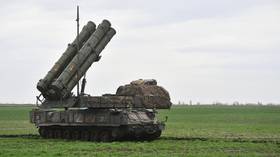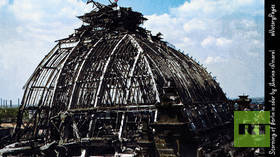Men with blue-collar jobs are workers most at risk from Covid-19, says new study
New figures released by the UK show that men with ‘low-skilled occupations’ are dying at a higher rate from Covid-19 than other workers, while in general men of working age are more likely to die than women.
Using death statistics from England and Wales, the UK's Office for National Statistics (ONS) found that people with white-collar jobs are far less affected by the coronavirus pandemic.
Out of the 2,494 working-age citizens (20 to 64) who perished from the virus – the figures in the report run through April 20 – two-thirds were men, the rest women. Among that cohort of the population, males were found to be nearly twice as likely to die from the coronavirus than females.
A further breakdown of the numbers shows that the men most at risk and who have the highest death rate are those who work in lower-skilled occupations, such as cleaners, drivers, or laborers like construction workers. This group, the ONS said, is the most at risk, with 21.4 deaths per 100,000 (225 deaths specifically in the report’s figures).
Also on rt.com US coronavirus death toll tops 80,000Among these jobs – which ONS labels “low-skilled elementary occupations” – transport drivers, construction workers, chefs, retail assistants, and security guards had particularly high death rates.
Men working as road transport drivers, including taxi and cab drivers and chauffeurs, had some of the highest rates of death involving #COVID19 among men https://t.co/zc05Rh5jHppic.twitter.com/5Q5eszAbOa
— Office for National Statistics (ONS) (@ONS) May 11, 2020
Blue-collar workers could be more affected for a variety of reasons, mainly the inability to work remotely – a luxury many in other job sectors have taken advantage of during shutdown orders across the globe.
The next most at risk group is those working in service occupations – like nurses working in care facilities or home care workers – who had “significantly raised rates of death,” at 17.9 fatalities per 100,000 (72 in the compiled data). Among this group, men are still found to be more at risk (23.4 deaths per 100,000 versus 9.6 deaths for women).
However, those in the medical field who work in hospitals are not at a higher risk than others, the study found.
Health care workers (including doctors and nurses) were not found to have higher rates of death involving #COVID19 when compared with the rate among those whose death involved COVID-19 of the same age and sex in the population https://t.co/OzRWMgpdGV
— Office for National Statistics (ONS) (@ONS) May 11, 2020
Further fatalities could change the findings of the study, and factors such as ethnicity, place of residence, and exposure to people of other occupations in a household were not accounted for. However, the researchers only counted rates for occupations with more than 20 deaths, “reducing the likelihood of the findings being a result of chance.”
If you like this story, share it with a friend!














